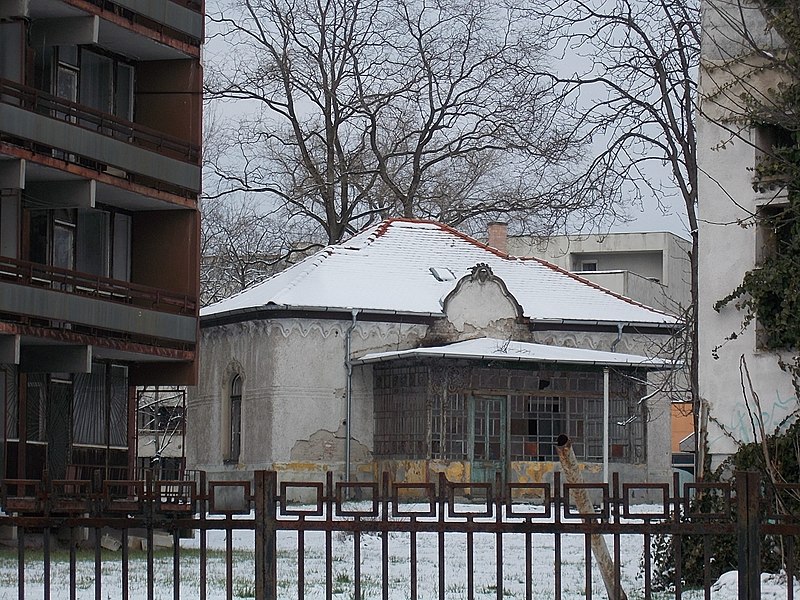These are Hungary’s scariest places
Many adventure-seekers like to visit old, abandoned and scary places, while others just like reading or watching videos about them from the comfort of their own home. Let’s explore Hungary’s most frightening and mysterious places.
We have already put out an article about Hungary’s biggest mysteries, based on a video by Paul Street on YouTube. This time, it is another video of his that takes us on a thrilling journey of Hungary’s terrifying locations. I should note – much like he does at the beginning – that anyone wanting to explore these locations should have the proper permits, equipment and experience.
5 The barrack of Szalafő
This army post gave a home to many border patrol officers once upon a time, located near the Slovenian border. The duties of border patrol officers included inspecting cars, people and their luggage before letting them into the country. Their responsibility was not to let any smuggled products and weapons in or out of the country.
The border patrol was created in 1946 and peaked during socialist times. The barrack in question was built sometime during the 1950s. After the regime change, there was not much need for border patrol anymore, and after joining the EU, it was integrated into the police in 2004.
The building is woven by weeds and other plants which creep in through windows; the painting is chipped, windows were broken, doors are gone. There is something very eery about the atmosphere of the place. The place is not hidden or closed off from the public, but the road there is quite unkempt as well, which only adds to the creepy vibe of the place. The video features pictures by photographer Levente Benedek took.
4 The Blaskovits-crypt
The crypt is in the middle of the National Park of Kőrösmaros. There is a legend tied to this place, which tells the story of Bertalan Blaskovits who was banished by the king at the time to an isolated moorland. But by the end of the 1800s, Bertalan built an over 21 square kilometre territory. The place was inherited by his smallest son István, who had eight children of his own with his wife, Amália. Their son, Ernő, carried on the family thread. He had three children with Erzsébet. Their two sons Ernő and Péter were the last owners of the grounds.
The beautiful estate was ruined and built over, as there were no more descendants of the family to carry the family property.
3 The abandoned children’s hospital
The hospital in question actually consisted of 15 separate buildings, back in the days of Greater Hungary. In 1901, the state had the idea that they needed to pay more attention to the care-taking of abandoned and orphaned children.
The building – named Children’s Shelter at first – has been standing there for 30 years now, completely untouched.
By 1912 there were over 4,000 children hosted at the shelter, as opposed to the initial 100. After WWI, many more children became orphans, which resulted in them needing a home as well.
After the Trianon treaty, only eight out of the 15 buildings remained in today’s Hungary, all of which operated as children’s hospitals after. However, most of them were torn down by now.
The one still standing has the words “in the name of eternal humaneness” written at its entrance. The building took quite a few hits during WW2. Although in the 50s it was given to a nearby university for research purposes and offered a vast budget for renovations, it has been decaying in the last couple of decades, the way it was left.
2 Witch-island
The island – found in Szeged – seems innocent and as a site-seeing destination, rather than terrifying. However innocent it may seem, there is a story behind it, which might surprise some.
First, what is meant by witches? Women who bring destruction, illness and doom with themselves, are possessed by a demon or a supernatural being, or practice occult rituals.
[dnh_embedlink=”https://dailynewshungary.com/eight-shocking-hungarian-mysteries/”]
There is a legend tied to this place as well. In the late 1700s, Szeged was going through a never-before-seen drought. When suddenly there was rain, it came with huge chunks of ice falling from the sky and locals were convinced of witchcraft. Twelve people were caught – believed to be witches – and brought to the riverbank. They were tortured in unimaginable ways and eventually burnt at stake at the same time.
Locals thought they would have peace now, but there are many recordings of people hearing the victims’ begging for help and cries for years to come.

1 Northern-Pest Hospital
The hospital is located in the 15th district. If looking at today, all one sees is a decaying, crumbling building. The institution was first opened in 1903-04, with other structures, such as the directory’s own separate building and a chapel.
For the first nine years after its opening, the hospital part actually operated as a mental institution. In 1912 the building was rebuilt as a workers’ hostel, to accommodate 300 workers. Whatever happened to the mental institute’s patients, Paul street could not find out.

After WWI, the place became overcrowded with wounded soldiers, and in 1920, another floor was added to the building, and in the next decade, it was broadened.
By 1945 the hospital was very well equipped, due to Soviets taking control of it. After the last Soviet soldiers left the country, Hungary decided that the equipment was too expensive, so it was brought to Russia, and slowly, the hospital closed, and as seen today, has been left alone since the late 1980s. Still standing, but slowly crumbling away.





